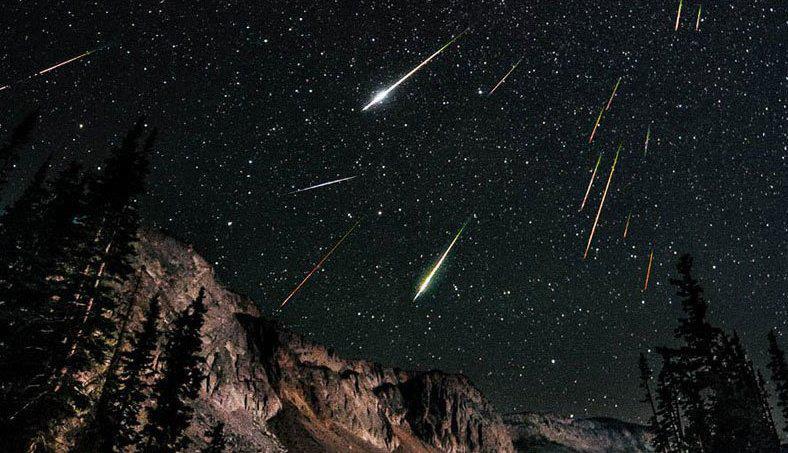At the mid-April, skywatchers located in the Northern Hemisphere will have a chance to get a view of the Lyrid meteor shower, the dusty trail of a comet with a centuries-long orbit around the sun. Skywatchers will have a chance to see Lyrid meteors streak across the sky between April 16 and April 25. The best day to see Lyrid meteors will be Monday, April 22. As with most meteor showers, the peak viewing time will be before dawn.
The radiant — the point from which the meteors appear to originate — will be high in the evening sky in the constellation Lyra to the northeast of Vega, one of the brightest stars visible in the night sky this time of year. Don't look directly toward the radiant, though, because you might miss the meteors with the longest tails. Lyrid meteors are little pieces of Comet Thatcher, a long-period comet that orbits the sun about once every 415 years. Pieces of debris left in the comet's wake, however, make an appearance every year. (Comet Thatcher's most recent perihelion, or closest approach to the sun, was in 1861. It won't be back until the year 2276.)
Meteor showers occur when the Earth crosses the path of a comet, colliding with a trail of comet crumbs. That's why they happen around the same time every year and appear to originate from specific points in the sky. As they burn up in the atmosphere, the meteors leave bright streaks in the sky commonly referred to as "shooting stars." Lyrids aren't generally as numerous as some other annual meteor showers, but they tend to be bright and fast. So wake early or stay up late, celestial searchers, and take NASA's standing advice: "Simply find a dark, open sky away from artificial lights. Lie down comfortably on a blanket or lawn chair, and look straight up." The earliest sightings of the Lyrid meteor shower go back 2,700 years and are among the oldest of known meteor showers. In the year 687 BC the ancient Chinese observed the meteors and recorded them in the ancient Zuo Zhan chronicles saying: "On the 4th month in the summer in the year of xīn-mǎo (of year 7 of King Zhuang of Lu), at night, (the sky is so bright that some) fixed stars become invisible (because of the meteor shower); at midnight, stars fell like rain. That era of Chinese history corresponds with what is now called the Spring and Autumn Period (about 771 to 476 BC). Tradition associates this period with the Chinese teacher and philosopher Confucius, one of the first to espouse the principle: “Do not do to others what you do not want to be done to yourself.”
The new moon will be a few days later, on April 26, so moonlight won't obstruct the view of the meteors as they streak across the night sky. Away from city lights, the sky will be about as dark as it can get. The Lyrid meteor shower is of medium brightness, but not as luminous as the famous Perseid meteor shower in August, which tends to produce more prominent trails.
Make the Lyrid Meteor shower viewing more exciting and name a star for yourself or as a gift to not only spot the meteor shower but also a star named after you. Enjoy.






